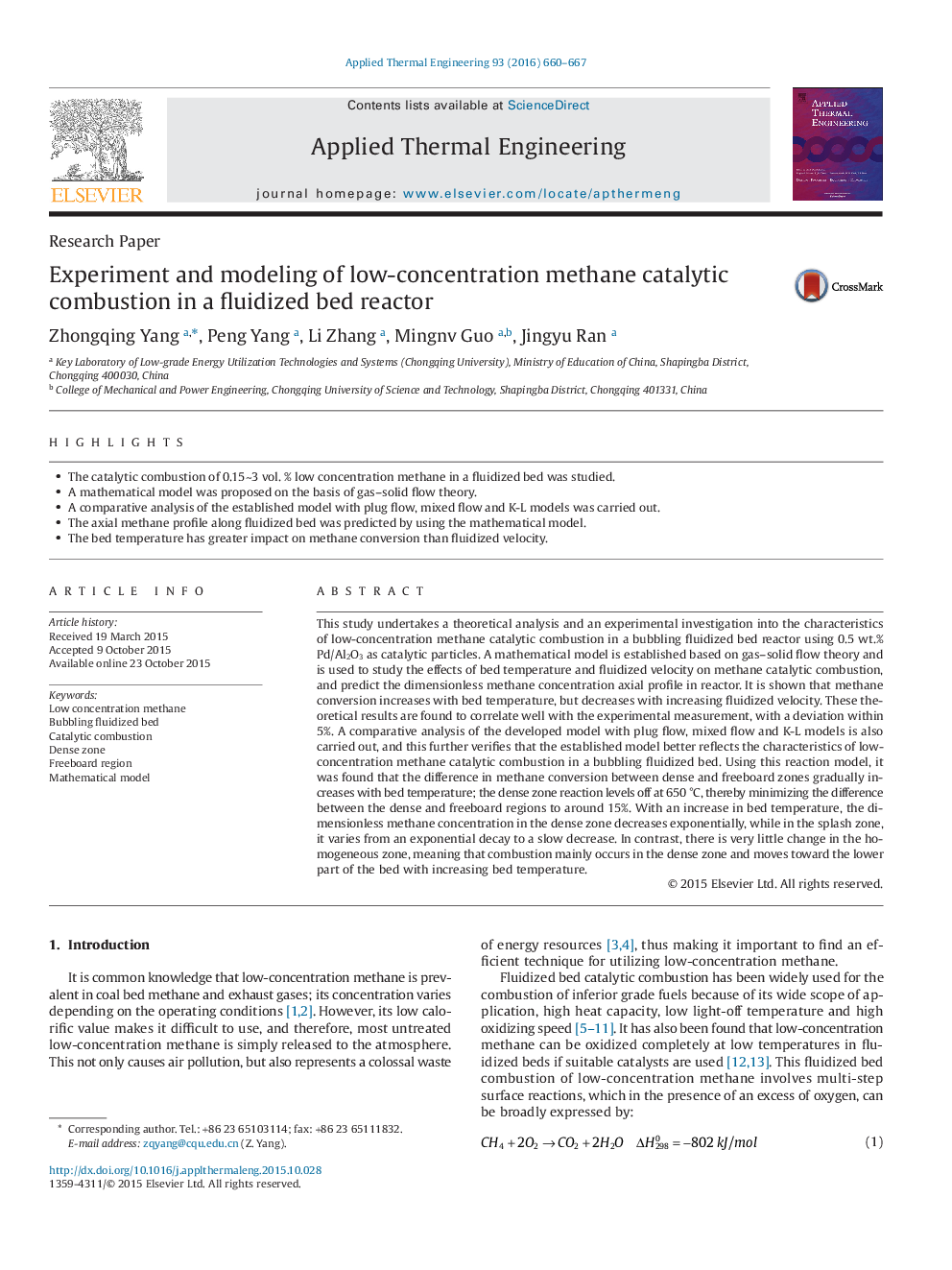| Article ID | Journal | Published Year | Pages | File Type |
|---|---|---|---|---|
| 7048774 | Applied Thermal Engineering | 2016 | 8 Pages |
Abstract
This study undertakes a theoretical analysis and an experimental investigation into the characteristics of low-concentration methane catalytic combustion in a bubbling fluidized bed reactor using 0.5 wt.% Pd/Al2O3 as catalytic particles. A mathematical model is established based on gas-solid flow theory and is used to study the effects of bed temperature and fluidized velocity on methane catalytic combustion, and predict the dimensionless methane concentration axial profile in reactor. It is shown that methane conversion increases with bed temperature, but decreases with increasing fluidized velocity. These theoretical results are found to correlate well with the experimental measurement, with a deviation within 5%. A comparative analysis of the developed model with plug flow, mixed flow and K-L models is also carried out, and this further verifies that the established model better reflects the characteristics of low-concentration methane catalytic combustion in a bubbling fluidized bed. Using this reaction model, it was found that the difference in methane conversion between dense and freeboard zones gradually increases with bed temperature; the dense zone reaction levels off at 650â°C, thereby minimizing the difference between the dense and freeboard regions to around 15%. With an increase in bed temperature, the dimensionless methane concentration in the dense zone decreases exponentially, while in the splash zone, it varies from an exponential decay to a slow decrease. In contrast, there is very little change in the homogeneous zone, meaning that combustion mainly occurs in the dense zone and moves toward the lower part of the bed with increasing bed temperature.
Related Topics
Physical Sciences and Engineering
Chemical Engineering
Fluid Flow and Transfer Processes
Authors
Zhongqing Yang, Peng Yang, Li Zhang, Mingnv Guo, Jingyu Ran,
